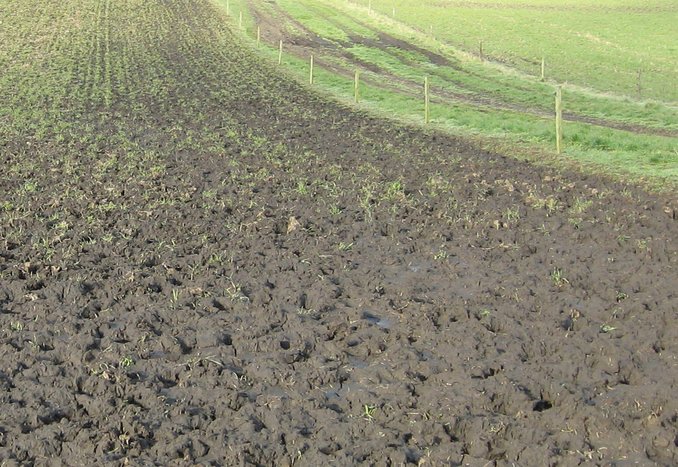Paddocks damaged in wet weather need fast patch-up
Many paddocks suffered during wet weather in autumn and winter this year. If yours are among them, now is the time to check the extent of the damage, and plan how best to get them growing good grass again.
In some cases, where damage is not too bad, ryegrass will recover. But if you do not repair severe pugging or treading, future pasture production will certainly suffer.
An on-going effect of pugging or treading damage is bare patches. Remaining ryegrass will not fill the empty gaps, because ryegrass is not a spreading plant.
If you don’t replace those missing plants, weeds will happily do the job for you - poa, thistle, buttercup, dock, summer grasses and the like. This is no good for pasture persistence, and your animals won’t like it much either.
Repair options vary, depending on how badly each paddock has been damaged. The one thing we strongly discourage is doing nothing! This can end up costing more than you realise, because of the need to buy in supplements to replace lost DM production.
Check all your paddocks, and plan to fix them according to their condition.
Whole paddocks severely pugged? Consider full renewal, either through a summer crop like 501 Chicory, or, if you are in a summer wet/irrigated area, through grass to grass.
Several distinct areas of damage? Mark all of them on a farm map, and get a contractor to come undersow them with Shogun as soon as soil temperatures start to rise. Book the contractor as soon as you can; you won’t be the only one needing a fast fix up.
Small patches? Oversow ryegrass and clover seed, to keep weeds at bay. Do it as soon as feasible, otherwise the weeds will get there first.
One final piece of advice – whatever you do, don’t throw cheap seed at this problem. It’s an open invitation to insect pests because its endophyte status is not guaranteed.


